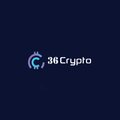Keynote 3 Reveals How BlockDAG Sold Over 19B Coins in Few Months! MATIC’s & ARB’s Price Declines
0
1

Scaling blockchain isn’t just about boosting speed—it’s about building a reliable and adaptable foundation. Both Polygon and Arbitrum have taken notable steps in this direction.
Their Layer 2 frameworks aim to ease Ethereum’s congestion using sidechains and optimistic rollups to cut fees and improve efficiency. However, despite their technical strides, both platforms have encountered notable price declines, showing that adoption challenges still persist.
In contrast, BlockDAG is taking a broader approach. While its hybrid consensus architecture remains a key feature, the focus on an integrated infrastructure—including explorers, oracles, indexers, and IDEs—has become central to its long-term growth strategy.
Polygon: Strength in Scaling, Pressured by Market Movement
Initially launched as Matic Network, Polygon offers a Layer 2 solution designed to scale Ethereum by processing transactions more efficiently. It uses a network of proof-of-stake validators and sidechains to handle transactions outside the Ethereum mainnet. This setup reduces congestion and improves throughput while keeping costs low.
Polygon’s initial funding came in 2017 through a private sale of 3.8% of its total supply. In 2019, the platform sold another 19% at $0.00263 per token via a launchpad offering, raising roughly $5 million.

As of March 29, 2024, MATIC traded at about $0.9912. But by March 29, 2025, the price had fallen to approximately $0.21—a steep drop of 78.8%. While this decline mirrors a wider market downturn, Polygon’s underlying role in Ethereum’s broader ecosystem remains relevant, thanks to ongoing development and integration efforts.
Arbitrum: Rollup-Based Scaling With Market Volatility
Arbitrum improves Ethereum’s scalability by leveraging optimistic rollups. This Layer 2 solution allows transactions to be processed off-chain, with only the results recorded on Ethereum. This method cuts down on fees and speeds up transactions, making it a practical choice for decentralized applications.
Arbitrum secured around $124 million in early fundraising rounds, with Series A and B tokens priced at $0.12.

However, like many crypto projects, Arbitrum has not been immune to price swings. On March 29, 2024, ARB traded at $1.6450. A year later, its price had fallen to $0.3291, a drop of about 80%. This performance underscores the risks Layer 2 platforms face despite strong technological foundations. Still, Arbitrum continues to adapt as the market environment evolves.
BlockDAG’s Ecosystem Builds a Scalable, Developer-Ready Network
While much attention has gone to BlockDAG’s consensus model—blending Directed Acyclic Graph with Proof-of-Work—its expanding ecosystem is proving just as important. BlockDAG’s infrastructure is designed to support scalability through utility, making the network transparent and easy to build on.
The BlockDAG Explorer offers a clear view of live transactions, blocks, and data, enhancing user trust. Indexers organize blockchain information for developers, reducing response times and increasing efficiency. Meanwhile, oracles link on-chain and off-chain data to ensure smart contracts operate reliably.
BlockDAG’s IDE (Integrated Development Environment) further strengthens its appeal by streamlining the development of decentralized apps. By making development tools more accessible, the platform lowers participation barriers and encourages innovation.

This comprehensive infrastructure has played a crucial role in BlockDAG’s growth. So far, it has raised $210 million in its presale, reaching batch 27 with a coin price of $0.0248. The project has delivered a 2,380% return since batch 1, selling over 19 billion BDAG coins. These figures reflect both buyer confidence and a robust framework for long-term adoption.
Infrastructure Defines the Future of Blockchain Platforms
Polygon and Arbitrum have demonstrated how Layer 2 solutions can improve Ethereum’s performance. Yet as blockchain technology matures, infrastructure strength will likely outweigh speed alone.
BlockDAG is addressing this shift by combining technical scalability with real-world development tools. Its explorer, indexers, oracles, and IDE form a backbone that supports more than transactions—they support functionality, usability, and long-term expansion.
Platforms with well-rounded, forward-compatible infrastructure are better positioned to lead as the ecosystem grows more competitive. BlockDAG’s integrated approach suggests that blockchain’s next phase won’t be defined by speed alone—but by the systems that support it.

Presale: https://purchase.blockdag.network
Website: https://blockdag.network
Telegram: https://t.me/blockDAGnetworkOfficial
Discord: https://discord.gg/Q7BxghMVyu
Disclaimer: This content is a sponsored post and is intended for informational purposes only. It was not written by 36crypto, does not reflect the views of 36crypto and is not a financial advice. Please do your research before engaging with the products.
The post Keynote 3 Reveals How BlockDAG Sold Over 19B Coins in Few Months! MATIC’s & ARB’s Price Declines appeared first on 36Crypto.
0
1
 Manage all your crypto, NFT and DeFi from one place
Manage all your crypto, NFT and DeFi from one placeSecurely connect the portfolio you’re using to start.








